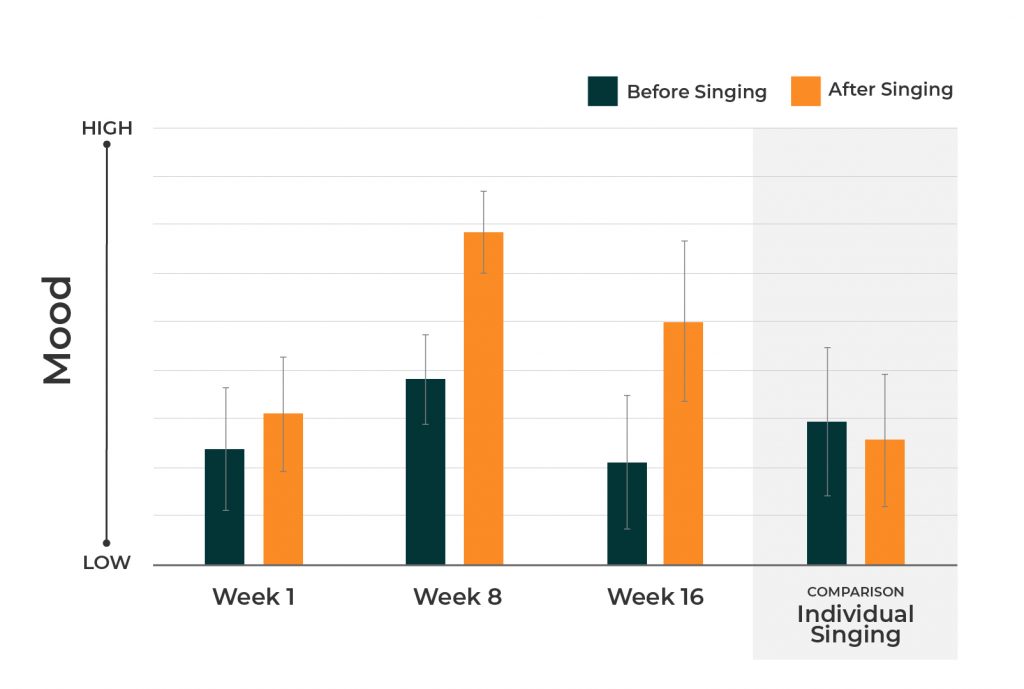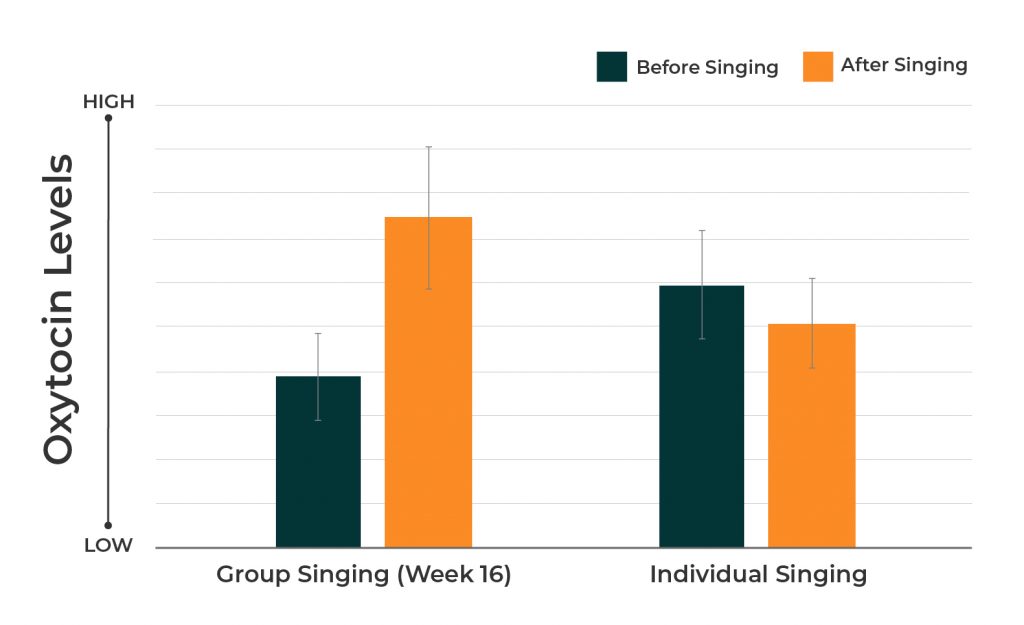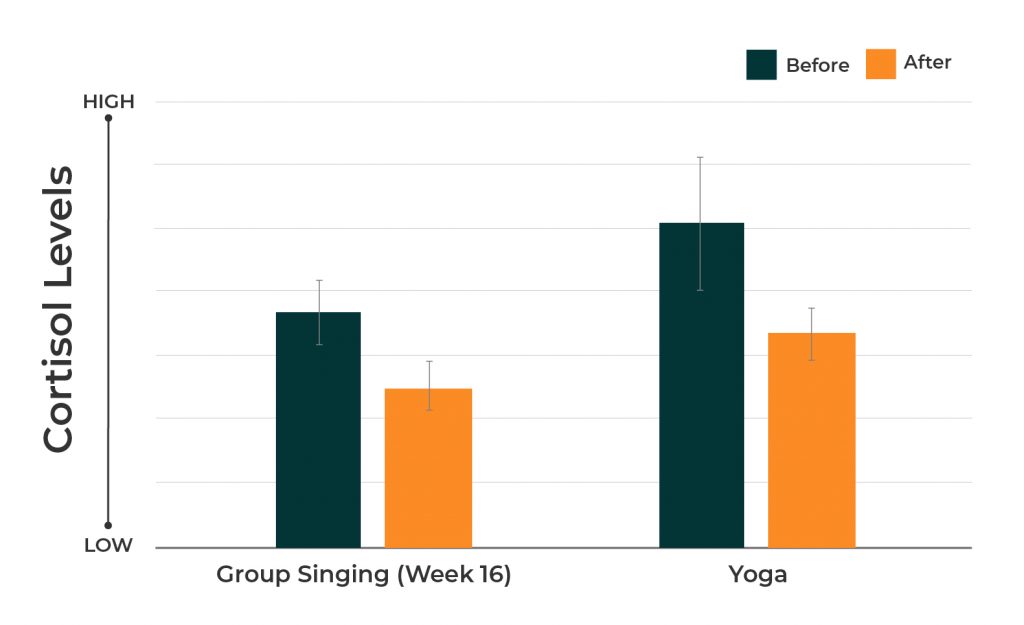Through SingWell research projects, we found that group singing had an overall positive effect on social and psychological wellbeing. Continued participation in choir resulted in cumulative benefits. Private singing yielded some benefits, but the best outcomes were achieved by singing in a group.
Project Findings
Findings
Social Connectedness
Group singing had a powerful, immediate effect on social connectedness, leading to efficient bonding within large groups. This effect continued to accumulate over two months of participation in choir and beyond.

Findings
Mood
Overall, group singing led to a positive shift on self-reported mood. This effect became particularly noticeable after two months of group singing.

Findings
Pain Threshold
Group singing elicited a positive effect on pain threshold. This effect was also accrued over long-term participation in choir. Groups that had been singing together for a long time demonstrated overall higher levels of pain thresholds.

Findings
Bonding
Saliva samples from choir participants contained oxytocin — the bonding hormone. So far, we are finding that only group singing increases levels of oxytocin. We did not find this effect in private singing.

Findings
Stress
Saliva samples from choir participants showed a reduction in cortisol — the stress hormone. This suggests that singing in general may reduce stress.

Findings
Presented In Abstract Form
Group singing elevates mood, increases social bonding, and regulates stress. However, the question remains as to how much of the singer’s mood-boost is derived from social aspects of group singing and how much can be achieved through singing alone. In the current study, we adopted a sociobiological approach to investigate the underpinnings of the singing related mood-boost. Using a within-subjects design, self-report mood, salivary oxytocin, and salivary cortisol were assessed following group and individual singing conditions. This study uncovered several important findings: group singing elevated mood, whereas individual singing did not. Importantly, although both group and individual singing led to decreases in cortisol, only group singing led to increases in oxytocin. Further analysis revealed that oxytocin, but not cortisol, significantly correlated with mood. These findings suggest that the mood-boosting effect of singing is likely due to social aspects and is influenced by changes in oxytocin.
